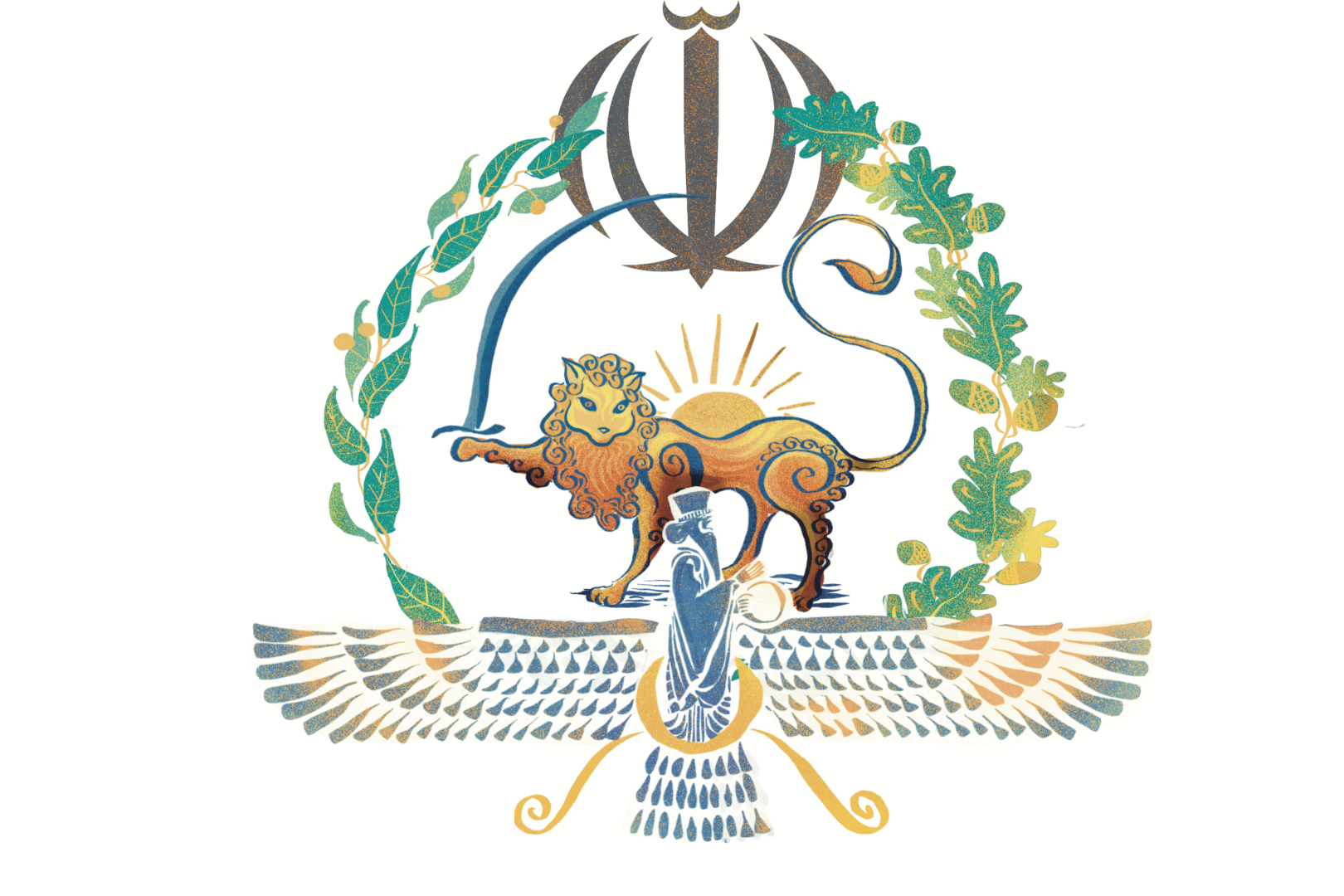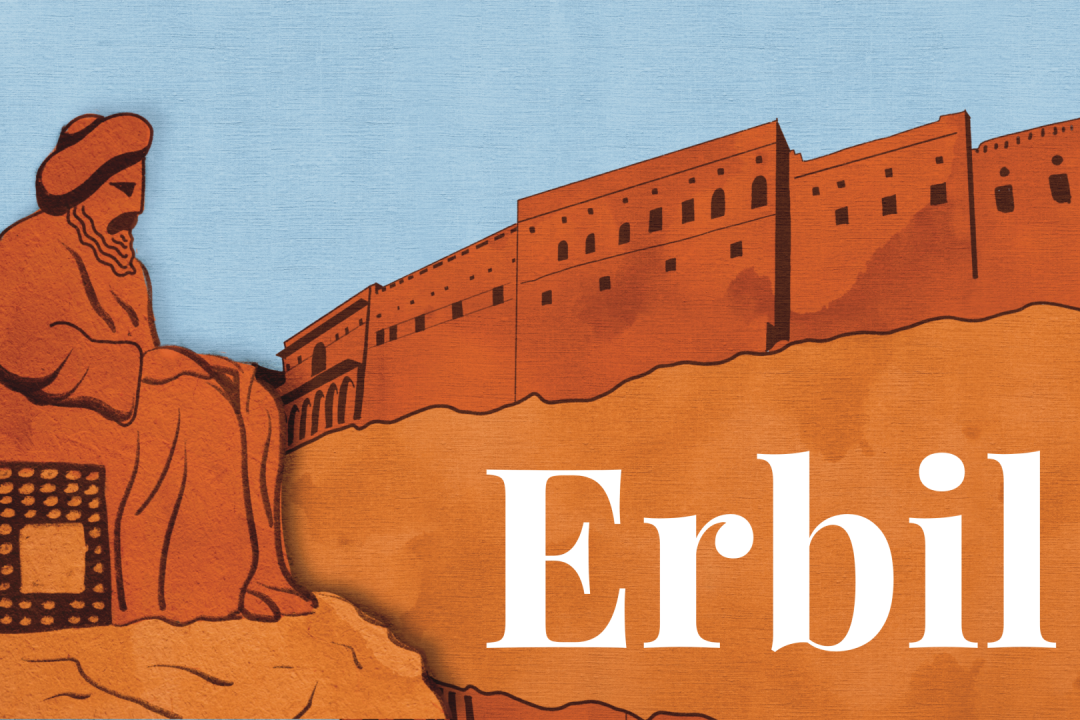
A Brief History of Iran’s Rulers
By:With a 2,500-year history that begins with the Median and Achaemenid periods, only the dynasties of Ilam and Median have been able to survive in Iran's history. Within the sphere of culture, noticeable transformations have occurred due to regime changes and it is possible to analyze Iranian rules and monarchs from pre-Islamic times to the present. Before the Achaemenid period, various tribes inhabited diverse regions of present-day Iran, with vast civilizations in Lorestan and Kermanshah, areas that are today inhabited by Kurds. The civilization of Urartu, which was located in today’s Azarbaijan, and the civilization of the "burnt town," which is the name of an ancient region in the southeast of Iran, are known to be historical sources for determining human development and civilization. These are only a few examples of the remarkable civilizations that have existed throughout Iranian history. The Ilam dynasty was the biggest civilization in Persia's history and their homeland was in southwest Iran, bordering Khuzestan. Evidence of the civilization has been found in Susa, the former capital. Different kings oversaw various systems of rule during the period of the Ilam civilization which is evidenced in the variety of coins and other trading items discovered. The Mesopotamian peoples, such as the Babylonians, Acadians, Sumerians, and Assyrians, were the main opponents of the Ilam dynasty. Their existence was a threat to the powerful authorities neighboring them, demonstrating the strength of Ilam’s dynasty since. To understand the establishment of the Achaemenid, a brief history of Arians should be detailed. A significant portion of Arian peoples were Europeans and other races, possibly from the north, the Black Sea, the Caspian Sea, and the river of Jeyhun. Later, some Arians migrated to northern India, while others went to what is now known as Iran, enabling the spread of Indo-European languages. After emigrating to what is known today as Iran, they were isolated into different parts of Persia, forming the Medians, Parthia, and Persians. The etymology of Iran infers from the word ‘Arian,’ meaning the lands of Arians.
The history of Ancient Iran
The development of the Median administration, the rise of the Achaemenid, the Sassanid dynasty, and the Arab conquest of Iran are all covered in the history of ancient Persia. After choosing Hegmataneh as their capital, the Medians started their rule over Iran. This dynasty was established by Diako and continued by his successors, Hoxshtra and Azi Dahak. Medians ruled Iran for a long time, but the precise date is not known. The Median rule was ended by Cyrus, who established a modern government under the name of Achaemenid, which was one of the most developed states in the world at that time. During this period, in conjunction with the headway of culture and civilization, it can be said that the jump of development in the east and the leap period within the history of Iran and the world happened within the Achaemenid period. The development of metalwork, rock carvings, weaving, and architecture, are a few examples of such developments in the region.
After the death of Alexander of Macedonia, who defeated the Achaemenid dynasty, Suluk, one of his officers, started the Sulukian reign in Iran. The Suluks were originally Greek and thus brought the Greek language and culture to Iran. Ardeshir I Sasanian known as Ardeshir Babkan was the founder of the Sasanian Empire. After the defeat of the last Parthian emperor, Ordvan V in 224 AD, he overthrew the Parthian dynasty and founded the Sassanid kingdom. After that, Ardeshir called himself "Emperor" and started conquering the land he called Iranshahr or "Iran".Ardeshir Babakan's son Shapur I was regarded as one of the great Sassanids rulers and succeeded his father on the throne after his death. The country's official religion was Zoroastrianism and its capital was Tisfon, located close to Baghdad.
The Early Islamic Period
The religion of Islam spread in Iran following the defeat of the Muslim Arabs against the Sasanians. Iran's history has seen numerous transformations over this period in the political, social, and religious spheres. It was difficult for Muslims to dominate Iran because while the villages did not readily submit to their rule and accept the Muslims, the cities readily accepted their rule. Muslims took control of Iran's eastern territories following conversion in the country's western areas, including Tabaristan and Gilan. Some regions required many conquests by Muslims.
The people of what is known today as Iran, tried to widen and advance Islam by embracing the religion because they were dissatisfied with the country's social inequality and discrimination. However, they never hid their disapproval of the Umayyad and Abbasid dynasties' domination over Iran throughout its history and launched independence efforts that resulted in the establishment of governments like the Taherians (881–826 AD) and the Saffarians (903 AD).
The Umayyads
The Umayyads were the first Arab dynasty to control Iran under Islam after the Arabs triumphed over the Sassanids. Damascus was declared the capital city by this regime, expanding the dynasty’s borders. Omar, Uthman, and Imam Ali were in charge during the Umayyad era.
The Abbasids
Abu Muslim Khorasani established the Abbasid government and designated Baghdad as its capital after weakening the Umayyad regime. The Abbasids ruled for more than five hundred years. The Abbasids initially established Kufa as the center of their power, Mansur, who was the second caliph of Abbasids, allied with Iran, which led to a rise in Iranian influence in the Islamic Ummah during the Abbasid era.
During this time, Baghdad developed into the global epicenter of science, culture, philosophy, and invention as the ruling class absorbed Iranian traditions and became supporters of the arts and knowledge, hence, this era is referred to as the Islamic Golden Age.
Taherian
The first independent administration after the Arab invasion was the Taherian dynasty, which was established by Taher Dzwaliminin, one of the chiefs of Mamun. The capital of this government was Nishapur. The Taherian rule came to an end through Yaqub Laith Safari during the time of Muhammad bin Taher.
Samanid Empire
After defeating the Saffarians, the Samanid Empire established its administration and ruled for 124 years with Bokhara as its capital. Great scientists like Abu Ali Sinawa and Abu Rayhan Al-Biruni lived in the Samanid period.
Al Ziyar
Al Ziyar or Ziyarians were a small family in the Gilan region that gradually took control of the whole of Iran. Mardawij bin Ziyar, the founder of Ziyarian, claimed to be one of the pre-Islamic royal families. His reign ended during the reign of Gilan Shah.
Al Buyid
The Al Buyid dynasty was independence seekers who formed independent ruling power after the arrival of the Arabs to return to the old Iran and regain the Iranian identity. Imad-Dollah Ali was the founder of the Al Buyid dynasty. Among the Al Buyid rulers, Azd al-Dawlah played a major role in the development of the region. Their rule ended during the reign of King Rahim.
Ghaznavids
The Ghaznavids began their rule from Afghanistan, conquering India as well. Alp Tekin was the founder of the Ghaznavid government and Khosro Malek was the last ruler of this era. Rulers like Sultan Mahmud of Ghaznavi and Sultan Masoud were also rulers in this era. Hakim Abouqasem Ferdowsi, the author of Shahnameh, is one of the most famous Iranian poets who lived during this era and is known as the savior of the Persian language.
The Seljuks
Tughril I Seljuk was the founder of the Seljuk dynasty. He succeeded in defeating the Al-Buyeh dynasty and also conquered Baghdad in 447 AH. Tughril married the daughter of Caliph Al-Qaim. He was the first person to plan the policy of diverting the Turkmen to the west. Alp Arslan succeeded Tughril, becoming one of the most famous kings of the Seljuq dynasty. At the beginning of his rule, Alp Arslan Red dissolved a new information network due to suspicion and mistrust, using the Turkmens to occupy areas of the Christian sultanate, Asia Minor, the Caucasus, and the lands of the Shiite Fatimids in Syria. Alp Arslan started a school-building movement during the Seljuk period as a reaction against the Ismaili Fatimid schools of Egypt in Al-Azhar. This period, which lasted for about 30 years, is called al-Dawla Nizamiyyah, or the age of the great minister of Nizam al-Mulk. It was Khwaja Nizam al-Mulk Tusi that, with his power of thought and politics, was able to turn the Seljuk dynasty into the peak of the political, economic, and cultural power during the reign of Alp Arslan and Malik Shah.
Khwarazmshahs
The Khwarazmshahs made Neyshabur their capital and ruled for 154 years. Nizami Ganjavi and Attar Nishaburi, are two well-known poets who lived during the Khwarazmshah dynasty. The Mongols defeated the Khwarazmshahi government and ended their reign.
The Mongols
After defeating the Khwarazm Shah, the Mongols ruled for a while under the control of Genghis Khan. During this period, Iran was significantly destroyed. The conflict began after the betrayal of a trading agreement created between Iranian authorities (Khwarazmian) and Mongolian legates. On the first trading caravan sent to Iran, the Iranian authorities suspected the existence of spies among the traders and merchants which led them to massacre the Mongolian traders and capture all their belongings. Genghis Khan did not respond immediately and tried to use soft power and diplomatic means to resolve the conflict. He sent an ambassador to Iran, however, the Iranian authorities did not accept diplomatic conventions and beheaded the Mongolian ambassador. This act was considered a declaration of war that was followed by a surprise attack by the Mongolian army, starting an extensive war in which mass killings occurred, putting many cities on fire and destroying a vast part of the civilized society in Iran.
Ilkhanate
Ilkhanate was one of the Mongolian administrations established by Halaku and ended with the rule of Abu Said after 79 (AD). Rumi is said to have lived in this period of history. After the Ilkhanate rule, there were other small autonomous powers in different parts of Iran, such as Sarbadarans, Jalairians, Chupanians, and Mozaffarians.
The Timurid Empire
The origin of the Timurid Empire goes back to the Mongols. Timur Lang, who was a relative of Genghis Mongol, started the Timurian rule. Timurids rule ended after 35 years. During this period, other regional powers such as Agh Qoyunlu, Marashian, and Qaraquyunlu were formed.
The Safavid Empire
The Safavid Empire was founded by Shah Ismail Safavid. During this period, the Shia religion was introduced as the official religion of Iran for the first time. Tahmasab I, Ismail II, Muhammad Khodabande, Shah Abbas, Shah Abbas II, Shah Suleiman, and Shah Sultan Hussein were among the other commanders of the Safavid dynasty. Isfahan, Qazvin, and Tabriz were the capitals of the Safavid era. This rule lasted more than 200 years.
The Afghans
The Afghans ruled for a while after conquering the Safavids. With the attack of Afghans and the capture of Isfahan, the Safavid rule ended.
Afsharid Dynasty
After defeating the Afghans and recapturing Iran from them, Nadershah Afshar founded the Afsharid Dynasty. Afsharians chose Mashhad as their capital and continued their rule until 46 AD.
Zand Dynasty
After the rule of Afsharian, the Zand Dynasty was established by Karim Khan Zand and Shiraz was chosen as the capital. After 34 years during the reign of Lotf Ali Khan Zand, this dynasty ended its rule.
Qajar Dynasty
Agha Mohammad Khan Qajar founded the Qajar dynasty. During this reign, kings such as Fath Ali Shah Qajar, Muhammad Shah, Naser al-Din Shah, Muzaffaruddin Shah, Muhammad Ali Shah, and finally Ahmad Shah Qajar sat on the throne. Tehran was the capital of Qajar rule which lasted 129 years.
Pahlavi
The last monarchy in Iran was the Pahlavi regime, which was established by Reza Shah and ended during the reign of Mohammad Reza Shah. This dynasty ruled for almost 54 years. After Reza Shah succeeded in power and established a new monarchy, he attempted to implement fundamental changes in the governing system and the social structure. Reza Shah had strategic plans for both nation-building and state-building and aimed to modernize the state and encourage people to hold to social values that existed before the spread of Islam. In this regard, he managed to industrialize the country extensively, terminate tribal power and administrations, and enforce Westernized values on a very conservative and Islamist nation. In doing so, Reza Shah made new policies concerning clothing, forcing women to unveil the hijab and compelling men to dress according to Western fashions. Reza Shah, however, endeavored to restrain external power interference concerning political and economic decisions for Iran. This was alarming for Western powers, as it threatened their control over the region and resources. In 1941, in response to Reza Shah’s attempts to nationalize the governing frameworks, Iran was invaded by the Allied Forces, during the Second World War, and Reza Shah was forced to announce his resignation.
Reza Shah’s oldest son, Mohammad Reza Shah was chosen as his successor. It was during his ruling period that the country boasted economic advances due to international trade and demand for raw materials and resources, however, the distribution of capital was not shared equally resulting in a huge gap between social classes. The monarch took steps toward unifying Iranians and neglected the heterogeneous nature of Iran, and the different ethnicities, languages, religions, and cultures contained within its boundaries. Unification was imposed through the suppression of social and political movements and the promotion of “Iranian” nationalism. Another factor believed to be one of the main reasons behind people’s eventual uprising against the Shah, was the direct and extensive interference that Western powers were granted by him in terms of political decision-making. Mohammad Reza Shah’s power came to an end after a public revolution in 1978.
Islamic Republic of Iran
In 1979, nearly 98 percent of Iranians voted for the Islamic Republic to replace the Pahlavi regime. Thus, after two thousand and five hundred years, the throne was officially abolished. In April of that year, a referendum was held to decide on important national issues. At the time of planning, some considered holding a referendum unnecessary believing that the millions present at demonstrations were evidence of support for the establishment of an Islamic Republic. Others, including the members of the Azadi Movement, believed that the mass demonstrations at both the national and international levels were not proof of support and that the demands of the people must be confirmed and approved in a legal form made possible by holding a referendum. The recorded results of this referendum were and continue to be for some analysts, a debatable subject. What cannot be disputed is that the Islamic Republic of Iran was established based on votes counted. The constitution was written following fiqh doctrines, creating a governing system based on wilayah faqih, which has continued in Iran until this day.



